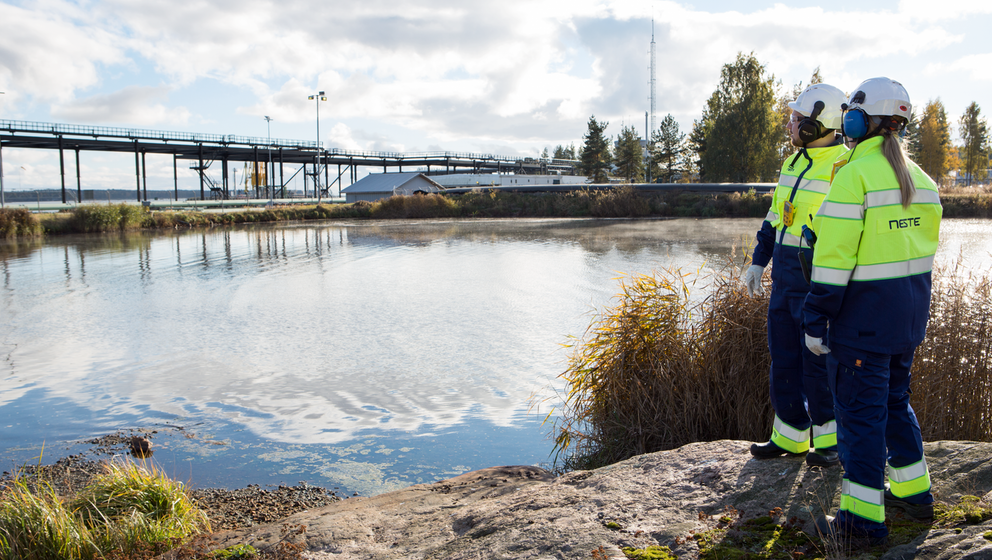Neverending energy is closer than you think
Energy already accounts for two-thirds of manmade carbon emissions, and its demand continues to increase. To solve this unsustainable equation, scientists are trying to crack the mystery of producing neverending energy. We explore the innovations that may take us to a sustainable energy future not-so-far away.
Expect to learn:
- How may neverending green energy, which once seemed like utopia, soon be reality – and which nations are leading the way?
- Which mind-boggling technologies could overcome the storage problem of renewable energy, such as solar and wind power?
- Which startling substances are scientists investigating to replace fossil energy?
- When can we expect sustainable energy to replace fossil energy sources – and how will this giant shift disrupt the whole world order?
For millennia, mankind has held on to two seemingly utopian quests: For some, the desire to live forever – for neverending life – dominates their dreams. Scientists, philosophers and billionaires alike have tried searching for an elixir of life, cryonically freezing bodies to resurrect the dead, regenerating human cells and uploading one’s mind to a cloud.
But simultaneously, . A limitless source of sustainably produced energy, sparing us from the worry of how the way we fuel our lives today affects the generations to come. And while one person’s quest for eternal life may be deemed individualistic, the potential of neverending, sustainable energy could improve all our existence immeasurably.
While securing energy supply has been a question of life and dead for humankind since prehistoric times, we’ve previously relied on finite resources that, in fact, accelerate our planet’s very decline.
“We live on a small planet”
“We live on a small planet,” says Sally Benson, Co-director of Stanford University’s Precourt Institute for Energy, and Director of the university’s global climate and energy project. “There are lots of us, and we have to think about stewardship of the planet.” She believes we’ve now turned a corner in how we think about and harness energy. “Instead of thinking we’re going to conquer nature, we’re now thinking about how we can have a partnership with nature to preserve the world,” Benson says.
2020 could further accelerate this shift in mindset. As economic activity and transportation begin to recover after the global pandemic, a window opens for us to pause and reflect on what kind of an energy system we should be building. As we are confronted with our own mortality at the hands of an indiscriminate virus, we, ideally, should also wake up to the planet’s mortality and review how our indiscriminate taking has affected its health.
“This giant reset grants us the option to launch aggressive, forward-thinking and long-term strategies”
While we seek everlasting life, we realize that if we don’t find an inexhaustible, sustainable way to fuel our societies, too, life on Earth will be anything but everlasting. While we now know that the 20th century worry of oil and gas running out won’t realize itself in decades to come, the need to stop using virgin fossil resources altogether has never been more urgent.
Eventhough nuclear power is expected to be a part of our energy future, too, it cannot power all of our energy needs and challenges with its cost, safety, waste-handling and proliferation across the globe remain to be solved. We need a global shift to renewable energy – and currently, that shift isn’t happening fast enough.
“This giant reset grants us the option to launch aggressive, forward-thinking and long-term strategies leading to a diversified, secure and reliable energy system,” Roberto Bocca, Head of Energy and Materials at the World Economic Forum, has said.
What does neverending energy look like?
Ever since the first modern oil well was tapped in Titusville, Pennsylvania in 1859 – indeed, ever since paleolithic humans burned wood for fire, warmth and as a way to cook food – we’ve dealt with energy the same way: we have taken whatever energy is available without feeling a need to replace it at the same rate as we are using it. We have used fossil energy as if it were a neverending resource, for us to extract and burn without considering the consequences.
The solar and wind plants of today generate renewable energy at a rate once thought to be mathematically impossible.
Today, energy use and production account for two-thirds of the world’s manmade carbon dioxide emissions. We know that energy demand will rise by 1 percent a year to 2040, but we also know that the supply can’t be from the same old polluting sources. Instead of uprooting hydrocarbons from under the Earth’s surface, scientists, research institutes and companies alike are developing ways to make use of nature’s force in a way that doesn’t remove it, but instead harnesses it. That mindset is key to unlocking neverending, green energy.
The solar and wind plants of today generate renewable energy at a rate once thought to be mathematically impossible. However, these traditional methods alone aren’t enough to consistently fuel our growing energy consumption. Societies don’t only need cleaner alternatives to electricity, but, for example, for replacing crude oil in transportation and as raw material for the products we use. To step away from fossil energy, we need a variety of disruptive technologies to take us toward neverending energy supplies – many of which will be from renewable sources and based on the principles of circular economy.
How could we harness the oversupply of sunlight for eternal energy?
It’s often said that a year’s worth of the world’s energy needs could be met by capturing just two minutes of sunshine reaching the Earth – and industry and academia are aiming to test that hypothesis. “We’re going to have solar energy as long as the sun shines, and when the sun shines, we get a lot of derivatives of solar energy,” says Sally Benson. “The quest and the challenge is how do you take advantage of that resource.”
In a world where the word ‘exponential’ is often used incorrectly to mean any kind of upward growth, solar power literally fits the bill. Energy-producing capacity from photovoltaic panels is expected to grow about 14 percent in 2020 alone, according to the IEA. The development also shows in prices: during the 2020s, building new plants for renewable energy is expected to become cheaper than running existing coal-fired power stations in every big market across the globe, according to Forbes. Around 2035, solar power is expected to overtake gas as the world’s dominant energy source around 2035, according to IEA forecasts.
However, solar panels are but only one way in which scientists are trying to harness the sun’s limitless energy. To utilize solar energy not just for electricity but for fueling transport and producing raw materials, too, there are other transformative technologies presently used in small-scale projects that could, with funding and careful thought, become more reliable, wide-scale alternatives. And a handful are ideas still being devised in laboratories around the world, tinkered with and tested, with great potential for tackling climate change further in the horizon.
Sweden, Switzerland, Finland, Denmark and Norway are the five countries most prepared for the energy transition
All those projects, which are at different levels of development, are important, reckons Petri Lehmus, Vice President of Research and Development at Neste, and an expert in leading teams creating circular solutions for the economy and society. “We need different solutions in parallel to cope with the big challenge of reducing CO2 emissions,” he says, advocating a staggered process that weans us off the most damaging energy habits we currently have as a planet.
Lehmus draws an example of the need for various parallel solutions from the transport sector, which contributes to a significant part of global CO2 emissions: in 2018, transportation accounted for 28% of greenhouse gas emissions in the USA. In the EU in 2017, the number was 27%. Electrification alone will not be able to address the industry’s massive emissions challenge in time. “Liquid and gaseous renewable fuels continue being part of the solution as they are easy-to-adopt and enable reducing CO2 emissions instantly, in the current infrastructure,” Lehmus states. “What’s important is that companies work both on scalable solutions with short-term impact and the ideal solutions that will become the major solutions in the long term.”
Svein Tveitdal, a former director at the United Nations who now runs the energy consultancy Klima2020, calls for private companies to join the quest: “We have all the solutions, and it is possible to solve this big challenge, but the major problem is the market itself is not solving the problem as fast as needed.”
What are the most promising energy solutions to tackle climate change?
One of the issues with using renewable sources for electricity has been their temperamental nature: you can only collect solar energy when the sun is shining, for example, and it’s difficult to store. It works fine during the day, but we demand energy 24 hours a day. However, this storage problem is also a thing of the past. “Lithium-ion batteries are getting less and less expensive and can play an excellent role in balancing solar energy during the day and storing it to use at least through part of the night,” says Sally Benson of Stanford University’s Precourt Institute for Energy.
Wind power, created by capturing energy through wind turbines, can also be stored in lithium-ion batteries. Researchers at the Karlsruhe Institute of Technology have theorized that the capacity of lithium-ion batteries can be improved by up to 30 percent by making simple changes to how the battery works.
The Power-2-X scheme is a big idea that could become one of the most viable solutions for tackling climate change
Batteries aren’t the only way of storing energy, however. One of the solutions considered most promising for storing massive amounts of energy from renewable sources in a meaningful manner is Power-to-X, or P2X. Using electrolysis, the transformative technology produces emission-free renewable hydrogen by splitting water molecules into oxygen and hydrogen with solar or wind power. By using CO2 as feedstock and powering the process with renewable energy, P2X can help transform our carbon dioxide problem into fuels, chemicals and materials with lower carbon footprints than conventional options.
The synthetic fuels created with P2X technologies could help even out the fluctuations from nature’s energy sources. Moreover, we could use the fuels for more than just power supply, transforming their energy into materials, which could themselves be recycled and returned into the value chain, making a virtuous circle.
The Power-2-X scheme is a big idea that could become one of the most viable solutions for tackling climate change. Sally Benson calls it “not that far-fetched”. “Those kinds of things are coming along,” Benson says. “It will take a while, but it’s not out of the realm of possibility.”
Neste is one of the companies developing Power-2-X at the forefront of the technological revolution in energy. They are also focusing R&D efforts on various other methods of transforming sustainable raw materials to energy – potentially unlocking the ability for neverending supplies. The company is already using a wide variety of waste and residue oils and fats, such as used cooking oils and animal fat waste, for renewable fuels and feedstock for polymers and chemicals production. Moreover, Neste is investigating how oily waste, such as fats derived from sewage systems, could be utilized. “We want to convert these low-quality fats into a variety of high-quality renewable products,” says Petri Lehmus.
Which countries are leading the way to eternal energy?
As is to be expected, majority of the movement towards a sustainable energy future is being made in the developed world. Sweden, Switzerland, Finland, Denmark and Norway are the five countries most prepared for the energy transition, according to the World Economic Forum. China, the world’s present economic powerhouse – and a country that is developing energy projects in the developing world – is ranked 78th.
However, the current issues with our energy supply and usage can’t be fixed easily and will require global coordination. The challenge is convincing all nations of the need to embrace cleaner alternatives to virgin fossil oil and gas. That is not an easy goal to reach, as energy sustainability is not yet top-of-mind for all economies.
“You can’t tell the poorest people in the world to reduce their energy consumption because it’ll save the planet”
“There are so many poor people in the world,” says Svein Tveitdal, a former director at the United Nations. “You can’t tell them to reduce their energy consumption because it’ll save the planet.” Tveitdal recalls memories of delegations from the developing world visiting him during his UN days, saying they would continue to utilize their natural resources, “be rich, then clean up afterwards – and don’t tell us we can’t do that.” Luckily, we see significant steps being taken all over the planet to utilize the power of nature sustainably.
What part do plants, plastic and space play in tapping into eternal energy?
One of the valuable energy resources that has long been the base of civilization all over the world is biomass – renewable, plant- or animal-based material that can be used as feedstock for energy, fuels and materials. Traditionally, countries in which energy supply infrastructure is at its weakest have used biomass the most. For example, since 2012, Uganda-based Mandulis Energy has been converting rice husks and other by-products from the agricultural industry into gas that generates electricity across small-scale grids powering communities.
But today, innovators in the most technologically advanced labs around the world are exploring biomass with new eyes. We now know how to replace hydrocarbons from fossil energy with carbons from these biological sources that always grow back, resulting in significantly less greenhouse gas emissions than using fossil raw materials.
Utilizing biomass is another way of harnessing the sun’s energy in a circular manner
Neste is looking not only at oils and fats, but large-scale use of lignocellulose, agricultural and forest residues, for example. “There we have a bit more of a challenge because such raw material is not optimal for the products we’re making, so we need to do more processing and conversions in between,” says Lehmus. “Using biomass, particularly biomass that is considered a waste or residue, is one of the solutions which is also scalable, and that’s why we have been using it for over a decade and continue to explore it.”
Essentially, utilizing biomass is another way of harnessing the sun’s energy in a circular manner. The energy in biomass, as well as in waste oils and fats, is derived from the sun and stored and carried by the carbons in these materials. If we optimized our whole energy and materials system to use these carbons again and again, we could avoid the use of new fossil carbons altogether and stop the cumulative release of CO2 emissions.
Nor is it just natural materials that can be recycled and given a second life as energy – potentially providing us with a neverending source of circular supply. Polyolefins, which are one of the most prevalent polymers used in plastics today, are made of hydrocarbons: “the perfect feedstock for making high-quality raw material for new plastics,” says Lehmus.
Globally, plastic production reached almost 360 million tons in 2018. In Europe, for example, the number was close to 62 million tons, of which approximately 10 percent was recycled, according to Plastics Europe. The situation is even worse in many other parts of the world. Neste is investigating plastic waste as a possible raw material and plans to refine liquefied plastic waste into high-quality drop-in raw material for the production of new plastics. The company aims to take the hydrocarbons within and transform them into building blocks for new virgin quality products, enabling the carbons to circulate, again and again.
The answer to neverending energy could be found in a place far, far away
It’s also possible to make hydrocarbons in the lab, by generating renewable hydrogen by splitting water into its constituent parts, then combining it with carbon dioxide to make hydrocarbons, such as methane. The technology is called Power-to-gas.
According to Benson, it’s certainly possible that we could create methane like this and use it as an energy carrier for renewable energy on a grand scale. If the energy used in the process is renewable, the CO2 is taken from the atmosphere and the system is closed without a risk of methane slippage, it would be a sustainable practice. “We could do it. It would be expensive today and it would take learning to make it work practically and efficiently, but those are the things that are definitely on the horizon,” Benson says.
The answer to neverending energy could also be found in a place far, far away: space. “One of the things we don’t often think about is that the Earth is hotter than deep space,” says Benson. The Earth is always radiating energy out into space. If we can find a material that radiates at the exact same wavelength as the Earth, the material would radiate energy and become very cold. Surround something cold with warm air and you create something called an energy gradient. “These are devices that generate electricity by having one end cold and one end hot to generate a current,” explains Benson.
Would neverending create a future of equal opportunities?
If these innovative projects came to fruition, our existence could change entirely.
If we had access to limitless energy, made available through circularity-based technologies, energy’s price could theoretically be significantly reduced. Energy poverty, which prevents people from progressing in society and accessing key things like the internet, heating and light, would diminish.
Some of these projects may seem small-scale, hypothetical, or like preparations for an energy future that seems at present to be distant and remote. Nonetheless, it’s important we prepare for that future. “Anything we do at the scale of the human energy system is going to have impacts,” concludes Benson.
And luckily, while the demand for energy increases 1 percent a year, technological progression seems to speed up exponentially. With focused, collaborative effort, we might well hack sustainable, neverending energy sources in time.
Chris Stokel-Walker is an author, speaker and journalist whose work has appeared in BBC News, The New York Times and WIRED UK.
Innovation at Neste
We continue to work towards increasing the availability of renewable and recycled raw materials while also developing technologies to diversify our current raw material portfolio even further from what it is today.





